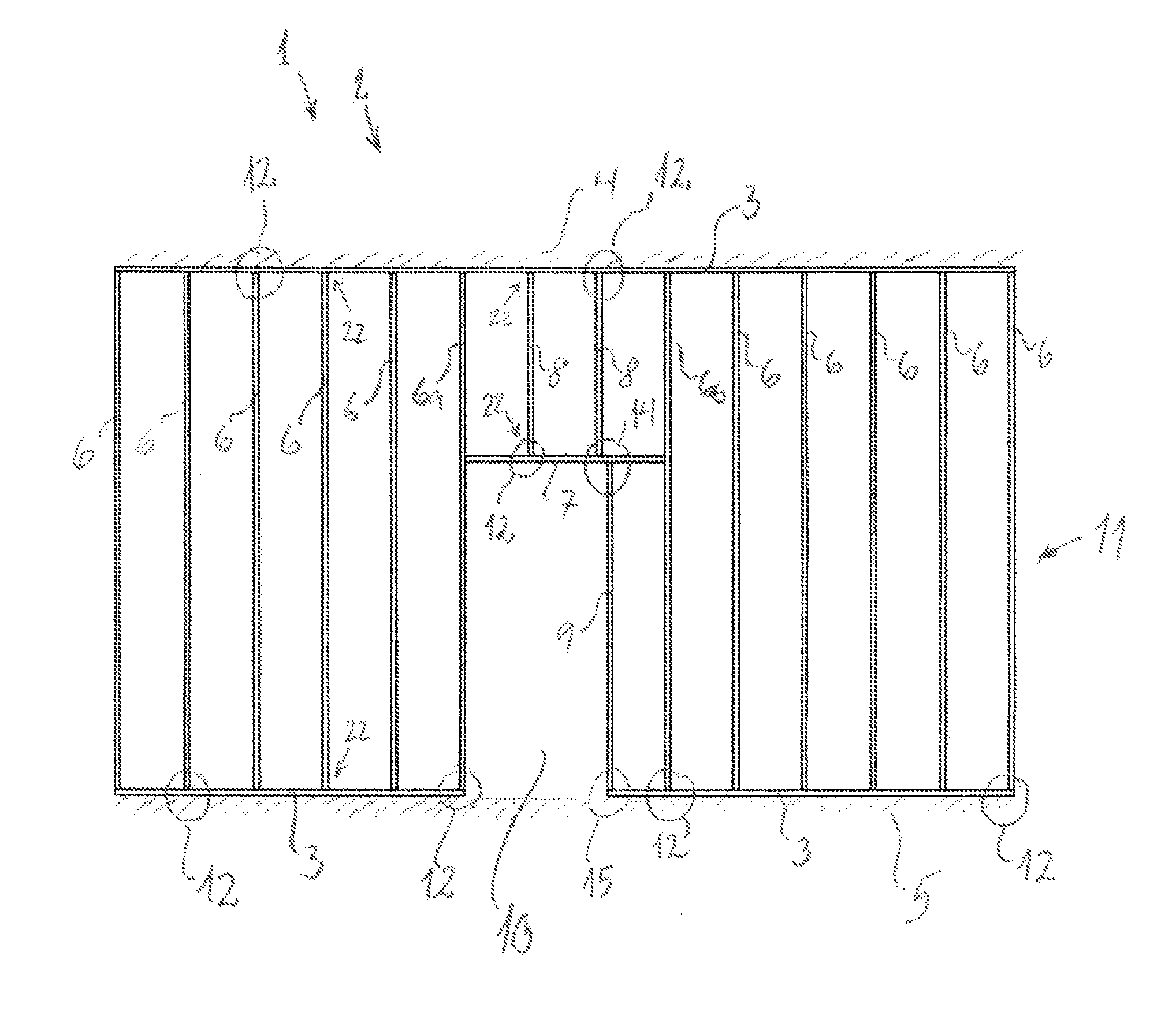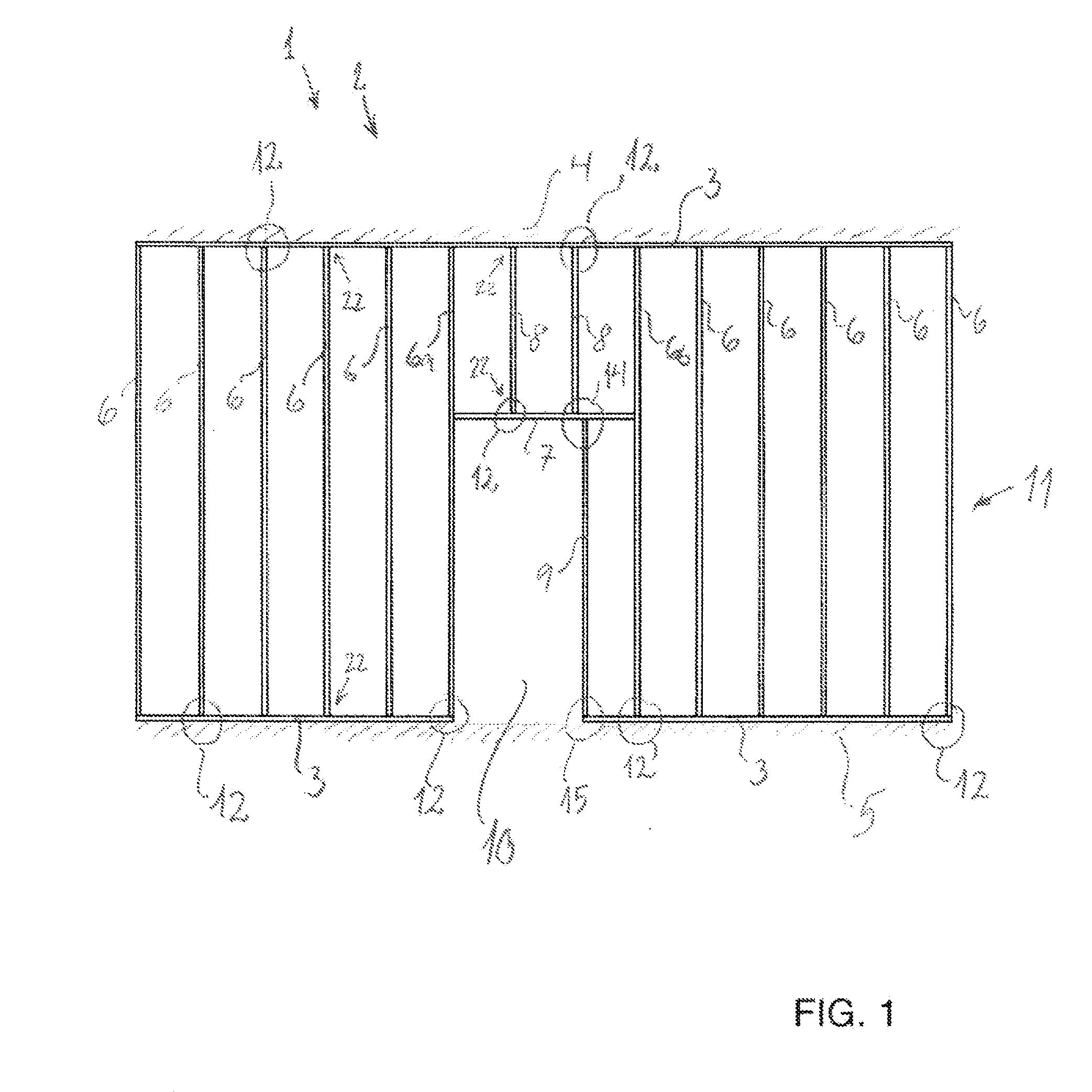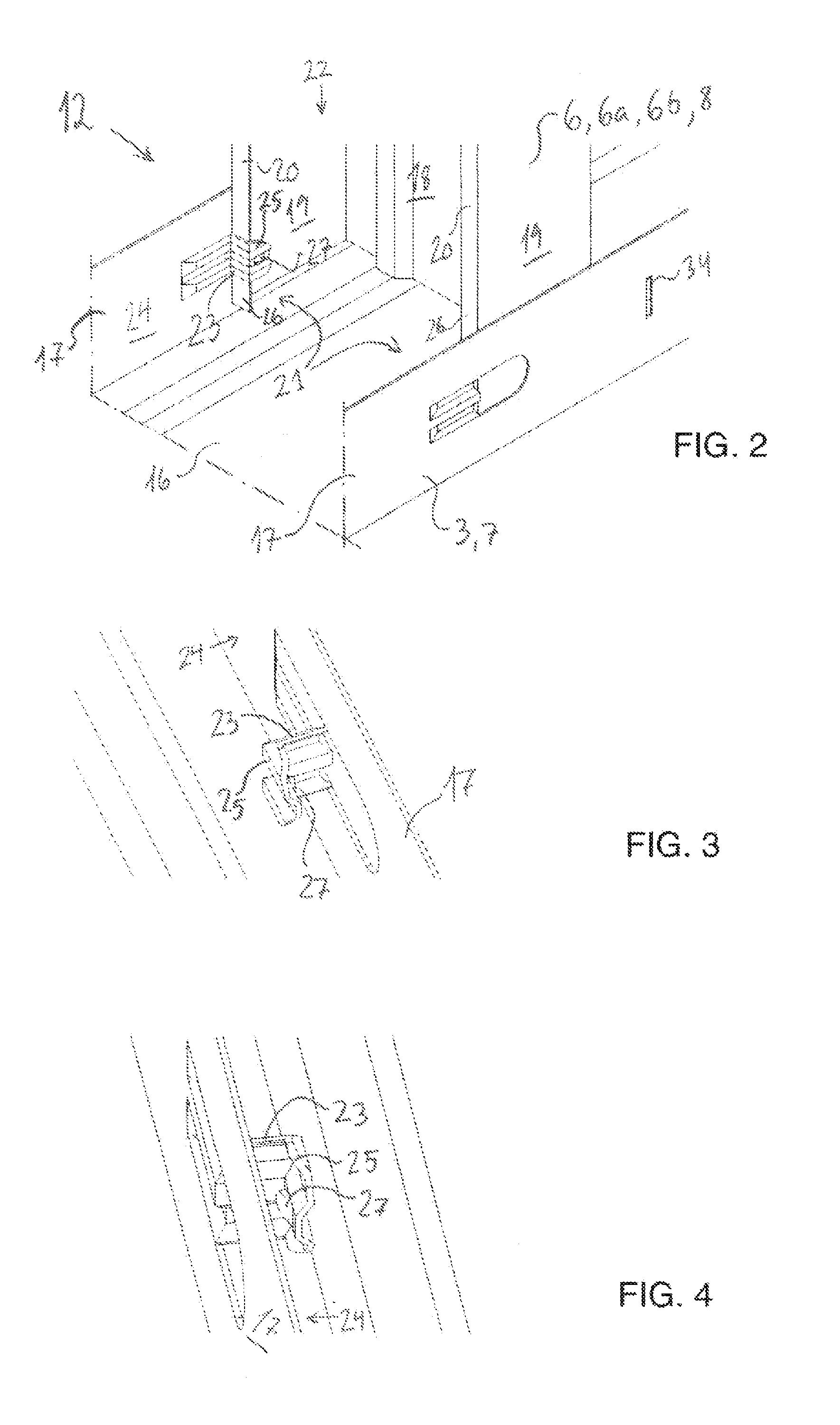There are the following disadvantages by this prior art:The modular dimensions between the intermediate rails may easily deviate, whereby the plaster board cannot be screwed on the intermediate rails with the required exact dimensions from screws to plate edge.The fixing by the fixing tongs frequently cannot stand when the workmen press the insulation into position.When screwing the plaster boards on, it is often difficult for a self-tapping screw to get hold of the screw webs at the end parts of the intermediate rails.
This is due to the fact that the aforementioned fixing cannot secure the screw web of the intermediate rail to the required extent.
Particularly around
doors where dynamic action on the plate covering may occur regularly, this can result in that the plate covering of the wall works loose, thereby putting greater demands on maintenance.
This depreciation of quality is unwanted in modern
building construction.The rail
assembly is time-consuming as, for example, 8.88 rail joints have to be made per meter of wall when the intermediate rail spacing is 450 mm.
Thereby it is possible to click the intermediate rails securely into position without measuring.Since the intermediate rails are to be displaced perpendicularly into both outer rails, it is necessary to assemble the entire sectional rail system at a place with ample space around for subsequently erecting the sectional rail system (the wall) in one piece and securing it at the place of building-in.Moreover, there is therefore to be made intermediate rails that fit the given ceiling height since shortening at the mounting site cannot be effected as the possibility of rail
assembly by clicking together is rendered impossible if the intermediate rails are shortened.The system is not flexible as intermediate rails have to be made for any ceiling height that may occur in a given building project, requiring substantial resources for planning the sectional rail system.The lateral flanges on the intermediate rails are not kept firmly in against the lateral flanges on the bottom and top rails.
The intermediate rails may hereby be displaced and the screw may have difficulty in getting hold, to the detriment of the quality of the work performed.
The drawbacks of this prior art is:There is required a very exact shortening of the intermediate rails as even
small deviations of the length of the intermediate rails can entail that some of the intermediate rails will slide out of the locking pins.
The
cutting tools used by the workmen for shortening frequently do not have the required precision.In practice, it will imply requirements to factory made intermediate rails and putting the outer rails on chocks, implying great demands on both construction site logistics, planning and mounting work.The lateral flanges on the intermediate rails are not kept firmly in towards the lateral flanges on the bottom and top rails at the rail joint.
The intermediate rails may hereby be displaced and the screws may have difficulty in getting hold, to the detriment of quality.
Concerning establishing door and window apertures, this work is tedious by all prior art sectional rail systems, why it is left to the building worker's creativity to provide the wanted door and window apertures.
A unnecessary use of material is thereby produced at the establishing of a door and window apertures in the prior art systems.
This is a cumbersome and time-consuming work that reduces the efficiency in the
building process.
Insulation batts, which have standard dimensions, thus have to be adapted by
cutting in all fields around the door and window apertures, which is a relatively time-consuming process.
In addition, in modern construction there are great demands to the quality and productivity in performing the work.
 Login to View More
Login to View More  Login to View More
Login to View More 


